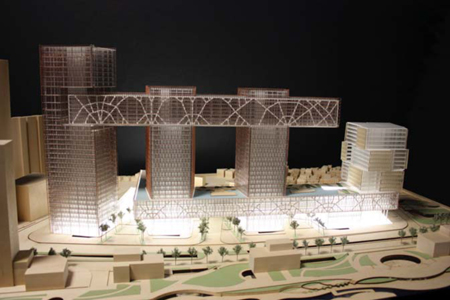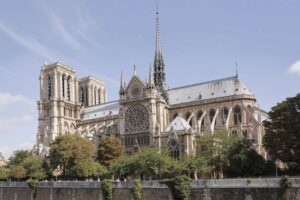Introduction: A New Frontier of Architecture
Architecture is evolving rapidly as advanced computational tools merge with immersive technologies. One of the most compelling innovations is topology optimization (TO)—a method of refining material distribution to maximize structural performance. When this is combined with augmented reality (AR), it enables a new dimension of real-time, intuitive, and visually rich design: Immersive Topology Optimization (ITO).
At the center of this evolution is ARCADE—a platform that enables architects and designers to experience and manipulate optimized forms directly within their physical environment.
What Is ARCADE? Augmented Reality Meets Engineering
In January 2025, Aragón and Algra demonstrated ARCADE: Augmented Reality Computational Launched in January 2025 by researchers Aragón and Algra, ARCADE (Augmented Reality Computational Analysis and Design Environment) is a Swift-based interactive system designed for the Apple Vision Pro headset.
It enables real-time topology optimization through a fully immersive AR interface.
Key Features:
Gesture-based controls: Adjust design constraints like supports and loads using hand movements.
Live feedback engine: View material redistribution and stress flow instantly.
Environmental integration: Overlay optimized structures onto real-world surfaces.
Why Architects Should Care: Form, Function, and Innovation
Organic Structural Forms
TO often creates biomimetic forms—lattice-like, skeletal, and truss systems—similar to those found in parametric design. Firms like LAVA (Laboratory for Visionary Architecture) integrate such strategies to build high-performing yet beautiful spaces.
Structure and Material Efficiency
With ARCADE, architects can explore how material changes affect structural stability. This creates efficient and lightweight building components, aligning with sustainable construction goals.
Design Freedom and Iteration
Traditional TO offers one solution. ARCADE allows for rapid exploration of design alternatives—supporting creativity by enabling multiple constraint scenarios live in 3D space.

Technology optimization -parametric house/Credit: parametrichouse.com
Core Components of the ARCADE System
Integrated Technologies:
- AR Interface – Project structures into real-world settings
- Live Optimizer – Balance precision and speed with edge computing
- Contextual Visualization – Align virtual design with physical context
- Interactive Feedback – Support iterative, immersive design development
Practical Use Cases in Architecture
Furniture & Product Design
Create ergonomic objects like a “bone chair” using internal TO-generated support structures, previewed in AR before 3D printing.
Structural Systems & Façades
Design elements such as cross-bracing, façade panels, and load-transferring beams can be tested virtually using ARCADE.
Pavilions & Installations
Inspired by kinetic or responsive architecture (e.g., Philip Beesley’s Hylozoic Ground), immersive TO enables adaptive structures that respond to light, heat, or movement.

Arcade project public cultural space/ MOU Architecture Studio/ Credit: Ang Wu
Current Challenges and Opportunities
Challenges:
- Computational Load: High-res 3D optimization is GPU-intensive
- Fabrication Complexity: TO forms can be difficult to manufacture
- Human-Algorithm Interaction: Designers need more control over TO logic
- Scalability: Moving from furniture to full buildings requires infrastructure and real-time data streaming
Opportunities:
- Integration with AI generative tools (GANs, diffusion models)
- Enhanced educational value via immersive teaching tools
- Future compatibility with Grasshopper, BESO, and other design pipelines
The Future: AR + AI + TO in Unified Design Workflows
Looking Ahead: How AI, AR, and Topology Optimization Are Shaping Future Architecture
The convergence of AI, AR, and TO is transforming architectural design workflows. AI-powered TO allows machine learning models such as GANs and diffusion networks to build optimised structural geometries in real time, reducing design time and increasing performance. Architects can use AR-based generative design to interact with many structural solutions in real time within actual locations. Platforms like ARCADE enable users to visualise and manipulate structural shapes depending on load, material, and geographical limitations, thereby increasing creativity, efficiency, and collaboration.
Immersive TO platforms change architectural teaching by bringing complicated structural behaviours to life. Students acquire hands-on experience with optimisation, increasing engagement, and developing design intuition. Together, these technologies provide a smarter, faster, and more immersive future for architectural innovation.
Conclusion: A Paradigm Shift in Spatial Design
RCADE & Beyond ushers in a transformative chapter in architectural innovation. By making real-time topology optimization tangible and interactive, it empowers architects to design more intelligently—balancing aesthetics, efficiency, and context in a fluid, immersive workflow.
As AR, AI, and TO technologies converge, we move closer to a future where design, intuition, and computation coexist in harmony—shaping a smarter, more responsive built environment.
For more blogs like this CLICK HERE
Reference
(PDF) ARCADE: An interactive playground for real-time immersed topology optimization
[2501.13564] ARCADE: An interactive playground for real-time immersed topology optimization





